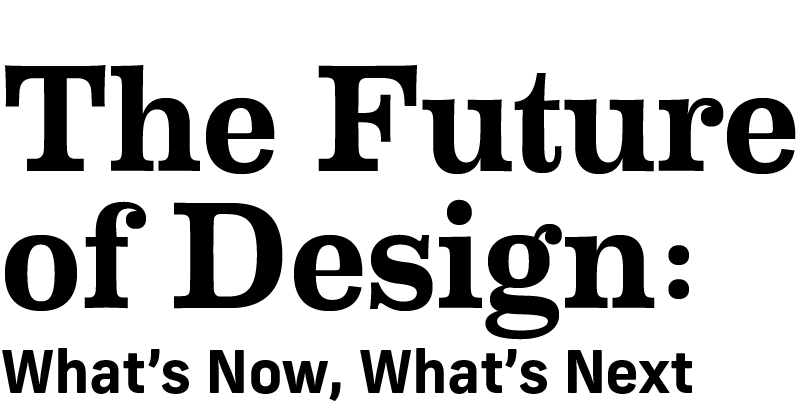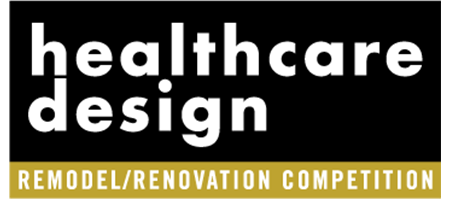
(Headshot credit: Courtesy of Moody Nolan)
The Sankofa Village Wellness Center is a 51,400-square-foot, community-driven project that’s designed to combat longstanding health and economic disparities for residents of Chicago’s West Garfield Park neighborhood.
Anchoring the Sankofa Wellness Village (SWV), the $30 million center will house preventive healthcare, behavioral health services, childcare, and job training.
Architecture firms Moody Nolan (Chicago) and Converge Architecture (Chicago) engaged community stakeholders to outline project needs, resulting in a walkable village model that prioritizes culturally responsive design.
Here, Roderic Walton, FAIA, NCARB, NOMA, principal at Moody Nolan and the principal in charge and lead medical planner on the project, shares insights on the planning and design.
How did you outline community needs for this new center?
Our team’s approach involved a forward-thinking, deliberate, and impactful 24-month engagement and planning phase with community members. Our team identified several key insights including a need to address the stark 20-year life expectancy gap in West Garfield Park compared to the Chicago Loop; the impact of high poverty rates on community well-being; and issues of food insecurity and limited access to preventative healthcare.
We also recognized a long history of community and developer disinvestment as well as a lack of comprehensive, integrated wellness services.
How did this process lead to the concept of the Sankofa Wellness Village ?
The Sankofa Wellness Village (SWV) is an initiative focused on integrating physical and community resources along the Madison/Pulaski commercial corridor. This village aims to provide diverse opportunities for West Garfield Park residents of all ages, offering access to health, wellness, and recreation services. Additionally, it will foster growth through finance and entrepreneur support, business development, healthy food options, and arts programs.
This easily accessible village will link the Madison-Pulaski corridor with other recent public and private developments, including the Garfield Park Community Plaza and Outdoor Roller Rink and the New Mount Pilgrim Missionary Baptist Church Campus. These interconnected resources are designed to help individuals achieve their aspirations and reach their full potential.
The Sankofa Village Wellness Center will serve as the anchor project for the village. Other planned projects for the village include the “K” Social Innovation Hub, offering office, retail, and special events space, and the MAAFA Center for Arts and Activism, which will provide flexible spaces for education, exhibition, workshops, and faith-based initiatives for emerging adult men of color located in West Garfield Park.
How does bringing all these services together better support the community and how is healthcare part of that?
Bringing all these services together was the right fit because the existing health systems in West Garfield Park lacked comprehensive, integrated wellness services that were affordable, accessible, and met the community’s clinical, financial, and cultural needs in one location. This integrated set-up directly addresses the significant disparities in the community, as highlighted previously.
Healthcare is integrated into the SWV by providing preventative healthcare to thousands of community residents annually, serving as a core component of the integrated wellness services offered. This approach aims to directly address and close the critical life expectancy gaps in West Garfield Park by focusing on holistic well-being.
What are some of the clinic design features?
The design strategy meticulously considered historical biases and the impact of segregation, actively working to acknowledge and dismantle the effects of decades of racial bias and discrimination. This will be implemented by ensuring that the design itself embodies the American Institute of Architects’ design excellence framework for equitable communities.
Additionally, the concept of a “walkable wellness village” prioritizes pedestrian access, connectivity, and features that accommodate people of all ages and physical abilities.
How did you emphasize a culturally responsive design on the project?
It was crucial to use a culturally responsive design on this project because the West Garfield Park community is 95 percent African American, and community themes such as “Black culture wellness” and the “spirit of Sankofa.”
The Sankofa bird is a powerful symbol originating from the Akan people of Ghana, West Africa. It represents the importance of learning from the past to build a better future. The symbol, often depicted as a bird with its head turned backward taking an egg from its back, signifies that it is not taboo to learn from and retrieve valuable lessons from past experiences.
The tie-in to wellness stems from the belief that authentic and uninhibited expression of Black culture can foster healing, promote healthy behaviors, and support overall well-being—mentally, physically, and emotionally—for the Black community.
The principle of Sankofa encourages Black communities to bridge the past and the future creatively. It invites those individuals to honor the history of the collective Black struggle and receive the wisdom that has been passed down from one generation to the next. It requires partnership to build foundations for posterity. The spirit of Sankofa calls on Black communities to recognize who we are, where we have been, and where we are going next.
Specific architectural details that engage and promote human connection include a community-designed mural on the primary façade of the building, an accessible and sustainable rooftop environment that community partners can program, and a flexible gymnasium environment.
Additionally, the concept of a “walkable wellness village” prioritizes pedestrian access, connectivity, and features that accommodate people of all ages and physical abilities.
How does this concept represent a new model in healthcare?
Instead of isolated healthcare facilities, it creates a hub where preventative healthcare is seamlessly woven into the fabric of a community. This model addresses the social determinants of health by colocating services that tackle issues like food insecurity, lack of access, and economic disparity alongside clinical care.
Additionally, its walkable nature emphasizes ease of access and promotes healthier lifestyles, making wellness an intrinsic part of daily life rather than a separate, often-difficult-to-reach destination.
What stands out to you the most on this project?
Its profound commitment to addressing significant health and social disparities in a community that has faced decades of disinvestment.
The project’s holistic approach, which extends beyond healthcare to encompass economic opportunities and community empowerment, is truly impactful. The dedication to deep community engagement and the incorporation of culturally resonant themes like “Black culture wellness” and the “spirit of Sankofa” into the design is a powerful model for equitable development.
The recognition with the Pritzker Traubert Foundation’s $10 Million Chicago Prize (for innovative and transformative ideas that could cause impactful change in communities) further underscores its innovative and transformative potential.
Do you expect to see more demand for these types of projects?
Yes, driven by several key factors, including:
- Growing recognition of social determinants of health: There is an increasing understanding that factors beyond clinical care, such as economic stability, neighborhood environment, access to food, and social support, have a profound influence on health outcomes. Projects like Sankofa directly address these determinants.
- Demand for integrated and holistic care: Communities are seeking more comprehensive solutions that address their needs in a unified and accessible manner, rather than navigating fragmented systems.
- Focus on health equity: There’s a heightened awareness of and commitment to addressing health disparities and achieving health equity for all populations. Projects that specifically target vulnerable communities and aim to close life expectancy gaps will be highly sought after.
- Community empowerment and voice: The success of projects like Sankofa, which prioritize deep community engagement and culturally responsive design, highlights the power of community-led solutions, encouraging more similar initiatives.
- Investment in preventative care: Payers and providers are increasingly recognizing the long-term cost savings and improved population health outcomes associated with investing in preventative care and wellness at a community level.
Tracey Walker is managing editor of Healthcare Design and can be reached at [email protected].













